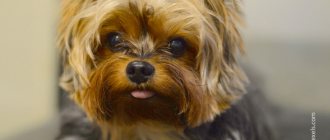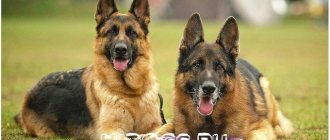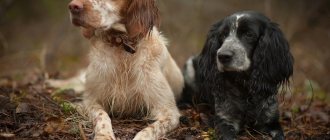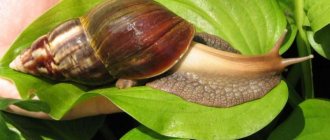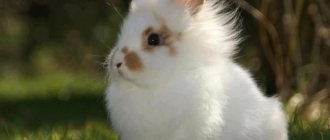How long do Pekingese live at home?
With proper care, he can live quite a long time.
In general, the life expectancy of Pekingese is quite high. In most cases, they live about 15-18 years, which by dog standards is an excellent indicator.
However, it is not uncommon to encounter individuals who have lived for 20 or even 22 years! Alas, if there are diseases or improper care, this period may well be reduced to 10-12 years. So a lot is in the hands of the owner! It can either increase or decrease the lifespan of the Pekingese.
Fact ! 15-18 years for a dog is almost the same as 87-93 years for a person.
Average life expectancy of dogs of different sexes
However, breeders know that when a dog is actively used for mating, the animal’s body wears out much faster. Therefore, if we talk about producers, the maximum age allowed to them is slightly less than that of ordinary dogs.
As practice shows, boys live for about 15-16 years, while for girls this period is 14-15 years.
But it is worth noting that only animals that have to frequently participate in mating or give birth every year or more often live less. If you do everything wisely and in moderation, then childbirth and mating will not affect the life expectancy of your pet in any way.
Story
Why the breed received this name is anyone's guess. Beijing is the well-known capital of China, and it was there that the rulers of the country lived, whose attribute were small dogs. The word “attribute” was not chosen by chance. No other dog in the world has been awarded such honors. Almost every pet had several servants at once. They ate exceptional dishes, which were presented on golden trays. The most amazing thing is that Eastern people developed very quickly in many branches of science. In those days, no one had even heard of genetics and the basic principles of cynology, but the selection of puppies for further breeding was very careful. Thus, the breed developed correctly, avoiding unnecessary defects.
Only Chinese emperors could own Pekingese. Any person, no matter whether it was an ordinary peasant or a high-ranking official, could be subject to the death penalty if he illegally obtained a precious puppy.
And there was only one legal path - to become worthy of the imperial favor.
There are no earlier historical facts, which means we have a wide field for imagination. One of the legends tells us about the love passion that broke out between a lion and a monkey. The result of such an amazing union was small lion-like dogs with a monkey's face. Another legend tells that Buddha decided to give humanity a gift, and did not find anything more useful and valuable than our heroes. The list of incredible versions about the origin of the imperial four-legged friends can be continued, but all of them will be far from the truth. Today there is no doubt left about the fact that the Pekingese were artificially bred at the behest of the reigning persons.
They were called "Fu" back then. Short, but not very attractive. In addition to their decorative function, they also played a sacred role. Together with the deceased ruler, his faithful pets were also supposed to go to another world. This is why small dog skeletons are so often found in burials.
It is unknown whether the animals were killed before burial or whether they were placed in the grave alive. This ritual had to take place because the Chinese believed that it was these unusual small animals with a lion’s mane and a monkey’s face that were able to save a person from his earthly sins, thereby cleansing him before the face of God.
During the capture of the summer palace by the British, soldiers broke into the empress's chambers and found her lifeless body. The ruler chose death over capture by foreigners. Several unusual dogs were sitting next to the owner, which attracted the attention of the British. They took their trophy and the Pekingese were later presented to Queen Victoria. So, for the first time, our heroes were able to cross the border of their historical homeland and move from east to west.
Now the life of privileged people has changed dramatically. Instead of servants and gold trays, the Pekingese had to serve as a watchdog, hunting dog, pet of the nobility and common farmers.
It should be noted that at that time the appearance of animals was very different from what we are used to today. Significant changes befell the breed along with fashion trends of different eras. At one time, dogs with a strongly flattened muzzle were held in high esteem, as a result of which our heroes were expected to undergo a transformation. It was the European period that became a time of change. As a result, we have many varieties and even several standards. The standards adopted in 1966 by the Fédération Cynologique Internationale are still in effect.
How to determine the age of a Pekingese
Who can resist such kids?
Experienced experts are able to tell quite accurately how old a particular dog is at one glance. There are quite a few features here that can be used to determine age.
For example, if the teeth are glossy, white and have unworn cusps on the toes, then this is a very young dog - less than 2 years old. By the age of two or three, the color of the teeth changes - they become dull, and the tubercles on the toes begin to wear off.
At the age of five years, the lower incisors remain without tubercles - they are completely erased. The fangs become less sharp, and in general the teeth turn yellow.
Note! By the age of 8-10, the fangs become dull, and the crowns are worn out by 40-50%.
At the age of 10, tooth loss begins. In addition, at this age dogs often gain excess weight, become lazy, and inactive.
What factors influence life expectancy
Unfortunately, there are quite a few factors that influence how long a dog can live. Of course, every breeder should know about them.
Poor nutrition
The most common reason. If a dog is malnourished or does not receive enough microelements, this almost always leads to illness. But it’s even worse if a pet eats too much - it begins to suffer from obesity, and this always reduces life expectancy by an average of 2-5 years.
Lack of physical activity
In general, Pekingese are very active dogs. But if they have no one or nowhere to play with, then they begin to age faster - their muscles become flabby, and apathy develops.
If little physical activity is combined with heavy feeding, then the problem is aggravated by excess weight. Of course, this takes an additional few years of life, bringing old age and death closer.
Diseases to which the breed is susceptible
In general, the Pekingese is a fairly healthy breed, which is not typical for decorative dogs. When provided with suitable living conditions, they get sick quite rarely and almost always these diseases are associated with the structural features of the torso and skull.
Most often they have the following diseases:
- keratitis,
- inversion of eyelids,
- stretching of heart valves,
- cataract,
- deformed intervertebral discs.
Therefore, monitoring by a veterinarian should be constant. This is especially true if there is an old Pekingese in the family. Regular visits to an expert allow you to detect diseases in a timely manner and deal with them faster.
Healthy !
When buying a pet, you should study the veterinary passports of the parents to know about possible inherited diseases.
Quality maintenance and care
Before you buy a Pekingese, you should know that this dog requires care, which includes:
- Keeping the coat trimmed, especially around the paw pads and between the toes, the Pekingese also needs regular grooming.
- Daily walks. The pet should be walked daily, 2 times a day for at least half an hour.
- Nail cutting with a special nail clipper should be done at least once every 2-3 weeks.
- Eye care requires special attention, the reason is the specific structure of the eyes. Due to the shortened tear duct, the dog's eyes are susceptible to injury and inflammation. For this Pekingese, the folds lying on both sides of the bridge of the nose are washed daily with a special solution.
- The dog's ears also need daily inspection and regular cleaning with a dry cotton pad.
- The Pekingese's coat should be brushed daily using a dog brush. It is also advisable to use a special aerosol for combing, which protects the hairs from splitting.
- You should bathe your dog when it gets dirty, using dog shampoo for long-haired breeds.
The Pekingese's coat is quite coarse, so it is advisable to use cosmetics designed specifically for hard and coarse coats..
How to extend the life of a Pekingese
Fortunately, there are a large number of ways to give your pet a few extra years of life. You should definitely know about them so that the dog can live in the family for as long as possible.
Balanced diet
Proper nutrition is the key to longevity.
The key to a long and happy life for any dog is a balanced diet. It is necessary to ensure that the pet receives all the necessary substances and trace elements in sufficient quantities. You can achieve the desired result in different ways.
Some breeders prefer to buy expensive food (super premium and holistic) - yes, the cost is impressive. But little dogs don't eat too much. And the perfect balance provides them with everything they need.
Other owners consider it best to spend time and prepare nourishing, healthy natural food - it is no worse than expensive food and is significantly cheaper.
Scheduled clinic visits, vaccinations
Also, we must not forget about regular visits to clinics. It is advisable to take young and healthy dogs to the veterinarian for an appointment at least a couple of times a year - even without any health problems. Older Pekingese dogs should be examined by an expert every two to three months. Still, it is much easier to cure a disease detected in the early stages than an advanced one.
Of course, you shouldn’t forget about the vaccination schedule. It is thanks to timely vaccination that you can protect your pet from the most dangerous diseases that most often claim the lives of dogs.
Proper care
We must not forget about proper care. There are simply no small things here. It all starts with walks - you need to walk your pet at least twice a day. Moreover, one of the walks (usually the second) lasts at least 40 minutes, and preferably an hour. During this time, the dog has time to run around to his heart’s content, and if there is a park nearby, he can also play enough with the owner and other dogs. Thanks to this, he burns extra calories, reducing the risk of obesity, and generally keeps himself in good shape. Such dogs remain cheerful, agile and active until old age.
Hygiene should be mentioned separately. Examination of the ears and eyes, timely brushing of teeth - these measures are aimed not just at making the pet look attractive. Thanks to them, it is often possible to prevent the development of dangerous diseases that can cause many problems and even shorten the dog’s life.
Castration, sterilization
This is a pretty drastic measure, but it can really help. If you castrate a male dog or sterilize a female dog during puppyhood (before puberty), this will avoid hormonal changes that often cause stress.
In addition, pets become less aggressive and calmer. This means the likelihood of injury is reduced. Also, male dogs lose the desire to wander - after all, many simply run away from home when they sense a female dog in heat nearby.
On a note ! Spayed bitches have a significantly reduced risk of developing mammary cancer.
As practice shows, timely surgical intervention can increase the life of a dog by 1-3 years.
Caring for an older dog
Caring for an older dog is somewhat different from caring for a young dog.
The thing is that with age, the character and needs of a pet change, and it needs special care and attention.
First of all, an older dog experiences changes in the musculoskeletal system; the dog moves less and sleeps more..
Therefore, the walking regime should become more gentle. Walks should be made shorter and without physical activity.
In addition, an elderly dog’s eyesight often deteriorates, it can bump into objects or have difficulty oriented in space, so such a dog should only be walked on a leash.
Also, for an older dog, changes should be made to the diet; if necessary, portions should be reduced so that the dog does not gain excess weight.
Some recommend switching pets to special food for aging dogs.
An older dog should be bathed less often, as it is more likely to catch a cold.
You should also make sure that the pet’s place is comfortable and he can sleep on it stretched out to the full length of his body. If your dog cannot control urination or bowel movements, do not scold him.
Just place a rubber mat under the bedding and wash it often.
As can be seen from all that has been said, Pekingese are quite unique dogs, they love care and need constant care. In addition, they are slightly arrogant and stubborn, but with the right approach, they love their owner immensely and are devoted to him.
The Pekingese is a dog for older couples and owners who do not like excessive activity . Also, this breed is quite suitable for families with children over 5 years old.
